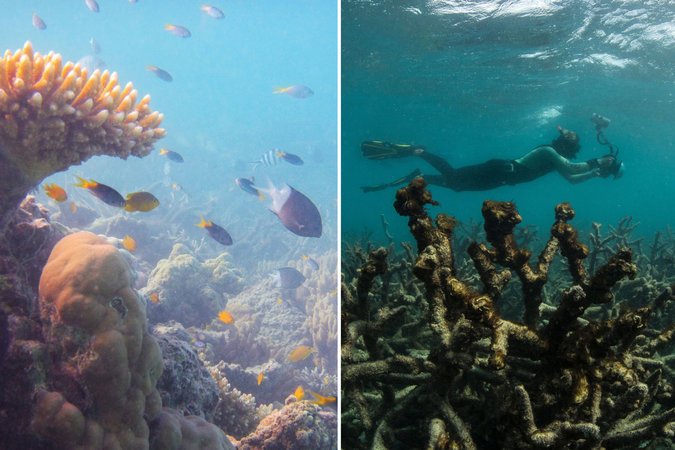Neal Cantin pulled off his mask and shook his head, In the crystal clear water after inspecting a coral reef. as he shock to see the current situation of coral reef.
All is dead and its because of our mistakes.
He and his dive team of international scientists inspected the devastation that human has destroyed the world’s greatest system of reefs.
As they spent days working on reef inspection in the Australian state of Queensland. The Cantin and his colleagues surfaced with sample after sample of living coral that had somehow dodged a recent dive.
We are in search of the super corals, the ones that survived in the worst heat stress of their lives in the Ocean. A researcher (with the Australian Institute of Marine Science in Townsville.)
Researchers said, The goal is not just to study them, but to find the ones with the best genes, multiply them in tanks on land and ultimately return them to the ocean where they can continue to breed.
The hope is to create better reefs — to accelerate cycle again.
Mainly the slowly build an ecosystem capable of surviving global warming and other human-caused environmental assaults.
The research here is part of a worldwide push that is urgent. After decades of continuous damage, followed by a huge destruction in 2015 and 2016. Some scientists believe half the coral reefs are gone that exist in the early 20th century.
A Forefront of reef experts is determined to act, Instead of standing around watching the rest of them die.
Michael P. Crosby, president of the Mote Marine Laboratory & Aquarium in Sarasota, Florida explain that They are finding techniques in Florida that may allow the rapid re-development of reefs killed by heat stress. In Hawaii, they are studying the biology of corals that somehow managed to cling to life as an earlier generation of people dumped raw sewage into bay.
In the Caribbean, countries are banding together to create a genetic storage bank for corals. A backup plan if today’s reefs all die. We are responsible for these problems. We have to get actively involve in helping the corals come back.
Risks and questions
This new push for the world’s reefs comes with its own risks, and with many questions.
A large-scale mending effort could be expensive. And so far governments have put up only modest sums despite the hit that their multibillion-dollar tourism industries.
In Mean time Scientists are trying modest approaches first. The most effective strategy for saving reefs in the long run might be genetic methods. Which including selective breeding or transferring heat-resistance genes into corals. That type of thing has been done for crops, but would it be ok to do it in the wild Life?
How to decide what interventions are right and when to intervene in the Wild Life.
Scientists who have involved into this kind of research are asking themselves if it is the right thing and if it would ever be enough given the scale of climate change’ predicted impact.
Scientists first warned decades ago that coral reefs were particularly sensitive to heat stress. And would be among the earliest victims of global warming, If emissions can be under control.
However if they ignore and humanity continue burning fossil fuels.
First global coral destruction began in year 1982 and now they seem to be happening every few years. Along the Great Barrier Reef, 35 to 50 per cent of the corals dead along a 650-mile stretch of the Queensland coastline.
Coral Reef Destruction
Researchers inform that it’s not too late to be antagonistic. And make necessary changes to safe the reef of the future.
Almost half billion people depend on reef fish for food. And in most of island nations, they are the only source of protein.The loss of coral reefs is not just a disaster, it will be loss of food and livelihood.
